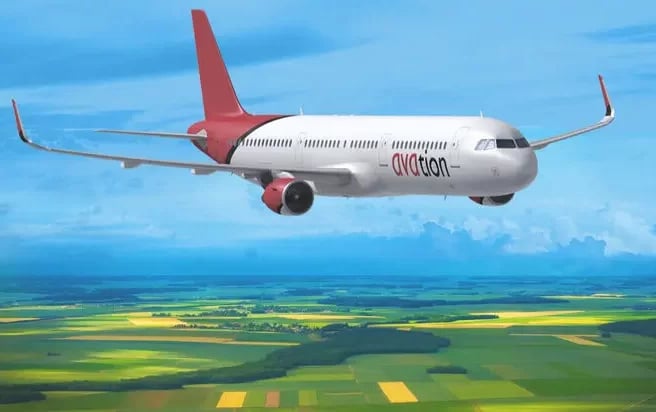Avation plc (LON:AVAP) Chief Commercial Officer Soeren Ferre caught up with DirectorsTalk discuss ATR demand versus supply, replacing older turboprops, aviation market recovery and lease yields rising.
Q1: As ATR’s are 21 out of your 37 aircraft and there are over 200 operators out there, how do you see ATR demand compared to supply?
A1: Well, there is currently a shortage of ATR’s for a number of reasons.
First one is the ATR market was actually very very soft before COVID so what happened was ATR actually decided to decrease production very significantly from close to 100 aircraft being produced a year to 25 this year. So, basically clearing these backlog of ATR’s.
When COVID happened, obviously, air transport was very much impacted but the first market that recovered was either domestic markets or markets which are basically what I would call ‘necessity markets’. Necessity markets are thing that have to be operated because otherwise, some airlines and some services would not be linked to the rest of the world.
So, the first market that actually recovered when COVID went away was a regional market so we ended up basically in a perfect beautiful storm, in the sense that our market was recovering faster than anyone else. In addition to that, the fuel price was high and when the fuel price is high, it’s actually very good for aircraft with propellers compared with jet aircraft. At the same time, the manufacturers were not producing aircraft.
So, we are currently in a situation where 6-8 months ago, people would ask me “‘where would I put my ATR’s?” and the answer would’ve been, more or less, “I have no clue”. To a situation like today, where we have zero aircraft available, basically, and we have one or two airliners every week if and when we get some more ATR’s.
Q2: Now, ATR see a need for replacement of older turboprops, where are these mostly?
A2: There are basically two main areas. The first one would be from the main competitor of ATR that used to be Bombardier, which is not being manufactured anymore. So, Bombardier actually has a fair amount of operators worldwide and many of them have actually fairly good credits, airlines like Qantas and a few others.
Obviously, the ATR in its initial version of the ATR42 and ATR72-200-500 are currently aging and when aircraft gets to 18/20 years, you need to replace it or you turn it into cargo and so forth. As an aircraft ages, the cost to maintain the aircraft increases, likely exponentially, once the aircraft is older than 15 years.
So, as I said, because of two reasons, one if aging fleet and basically a disappearance of its main competitor.
Q3: How do you see the aviation market recoveries in say Asia, EU, the US and so on?
A3: I would think most of the markets have actually now recovered and basically reached pre-COVID levels. There is a big caveat to that statement which is the fact that international transport to and from China is just starting again at a very low level and there are basically a number of markets or airlines which are very much exposed to the Chinese market.
Obviously, China Airlines is one of them and China is now almost a quarter of the world traffic, it’s a major market. All of the airlines in South-East Asia or North-East Asia; Japanese, Taiwanese, Korean, Vietnam, Thailand, all those economies depend very much on the tourist traffic from China.
Obviously, you’ve got some airlines in Europe like Air France that had many flights to China, Lufthansa, Finnair has a very strong Asian market, also have lost part of the international traffic because of China.
China announced last week that they are going to reopen China for tourist traffic; before it was only for business traffic. I think it’s going to take a while before the airlines basically can put them back into the market to operate in China.
So, my gut feeling is that we’ll be worldwide, back to pre-COVID levels, inclusive of the Chinese market, I would hope within a year, early in Spring ’24.
Q4: With new aircraft deliveries being delayed, are aircraft being kept flying for longer, do you think?
A4: Usually, that’s the case, yes. If people cannot produce aircraft fast enough, aircraft will basically last longer so, yes, we see that trend but it’s not going to be the case in many markets. Airbus, for example, on the A320, has currently a production rate of 65, or targeting 65, but they are already making plans to go to 75.
We see a fair amount of large orders now coming back on the way like orders that came last week from Saudi. Even on the ATR side, ATR has announced that they want to increase production so they are currently at 25, they will probably increase to 35/40 but not much more than that.
So, yes, many manufacturers are gearing towards producing more aircraft across the range, and ultimately, the market will not extend, and without any constraints. So, I think what we’ll see is when the production level becomes high enough, we will see that older aircraft will be pushed into retirement.
Q5: WACC increased from 5.7% to 6.1% but lease yields they fell from 9.5% to 9.4%, surely lease yields they have to rise as well?
A5: Yes, they will eventually because, for a new lease, usually you’re going to have an adjustment of your lease agreement towards higher interest rate. So, if you were leasing an aircraft at $150,000 per month on new planes for example 2 years ago, now you would go and basically say because of the interest rate, I’m going now to proceed at $180,000 so there is an adjustment.
Now, what’s happening with the leasing industry is you actually refinance aircraft more than you actually lease aircraft. So, it’s quite normal in the current environment, if we need to refinance an aircraft which is currently already with a lease attached to it, we cannot go to airline and say, by the way we’re doing refinancing, the interest rate is higher so can I please charge you more. They are going to say thank you but no thanks because I already have a lease agreement and you’ve agreed you’re going to give me this price for certain period of time, at a certain interest rate.
I can’t do that but what I can do is if I’ve got almost no leverage on my aircraft because I’ve repaid my loan, and I want to increase my leverage because I want to generate cash so that I can grow as a business, is go out and refinance the aircraft, on the back of the current market with a high interest rate.
So, it’s quite normal that we see the overall cost of that addition increases because we’re going through those refinancing to generate more cash but the lease rate is not increasing yet. It will only increase once we have to stop remarketing aircraft.
On the ATR’s, a while ago, during COVID and when I started working again with Avation, we were trying to lease ATR’s at 70, and now we’re trying to lease those aircraft at 85 or 90.
So, the increase of lease rates you will see, but you will see only as the leases end and we do remarketing of the aircraft.








































